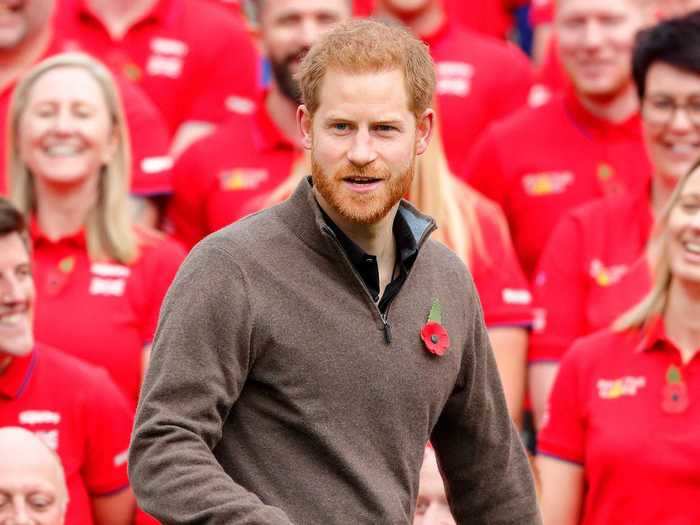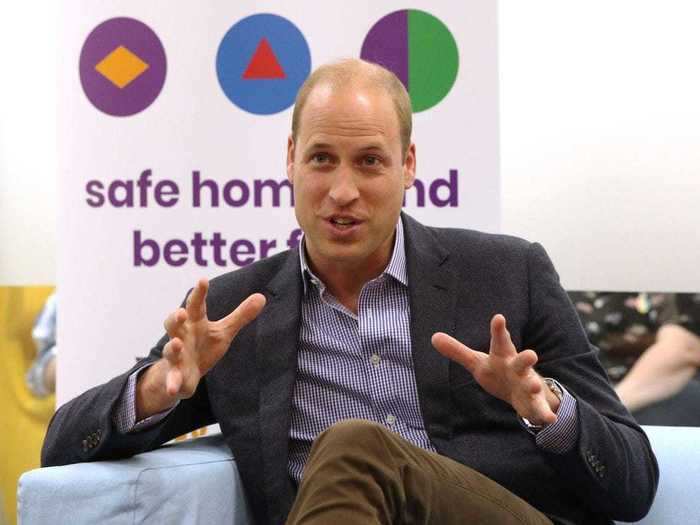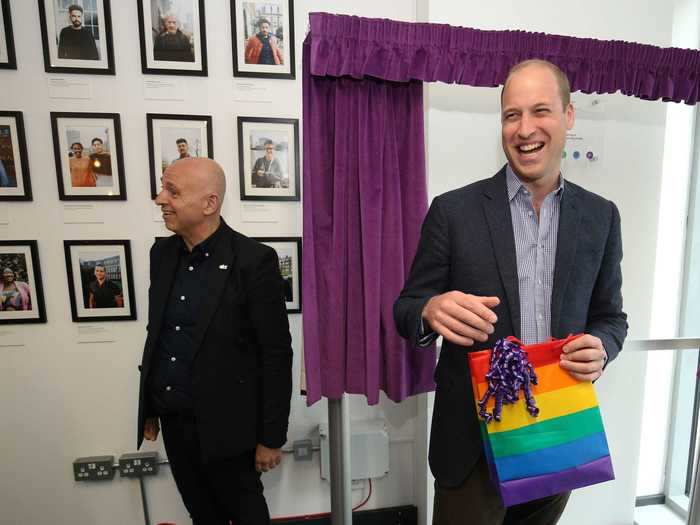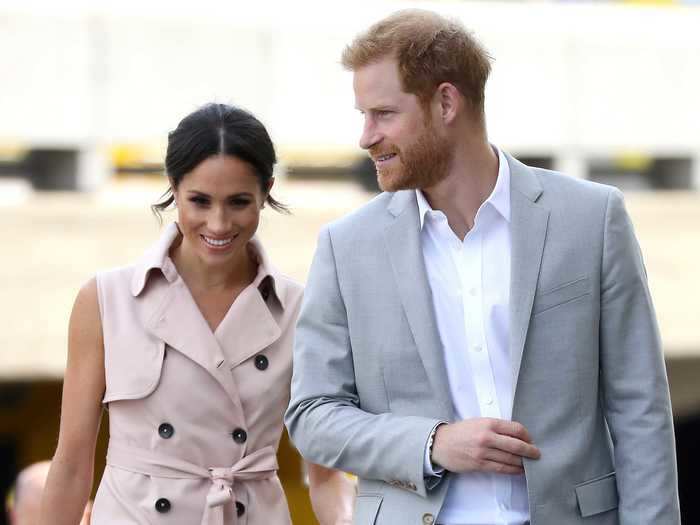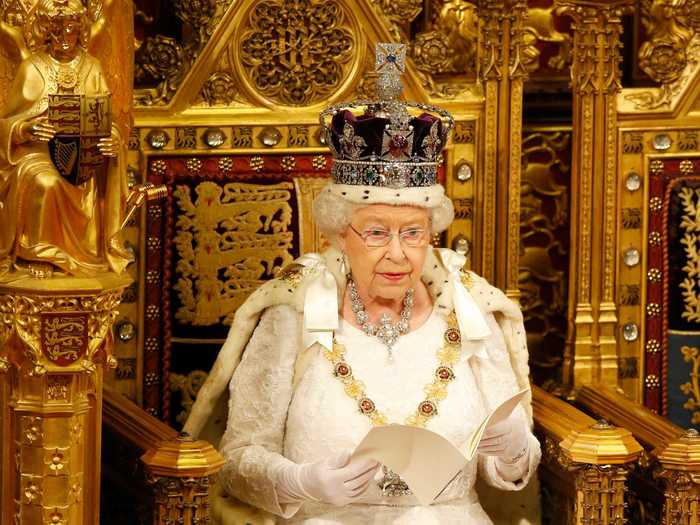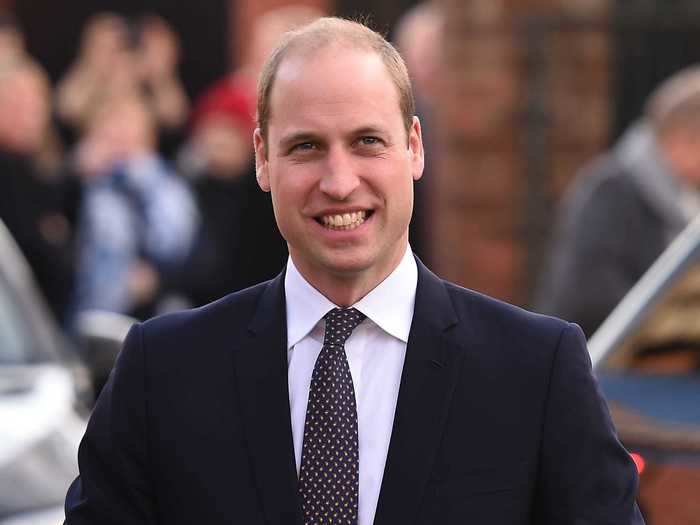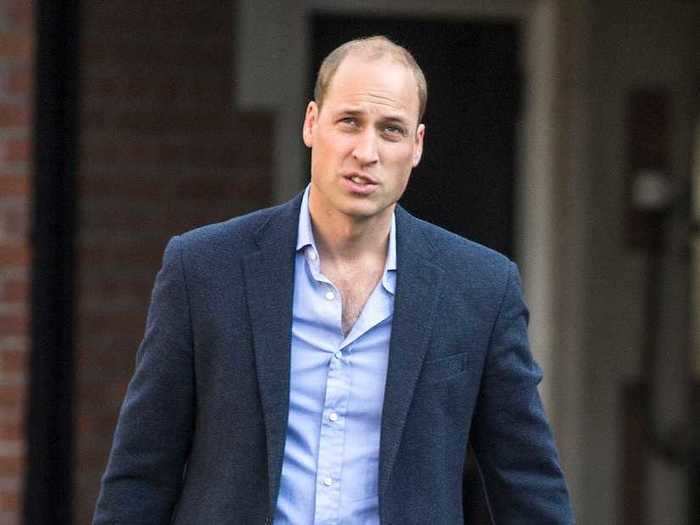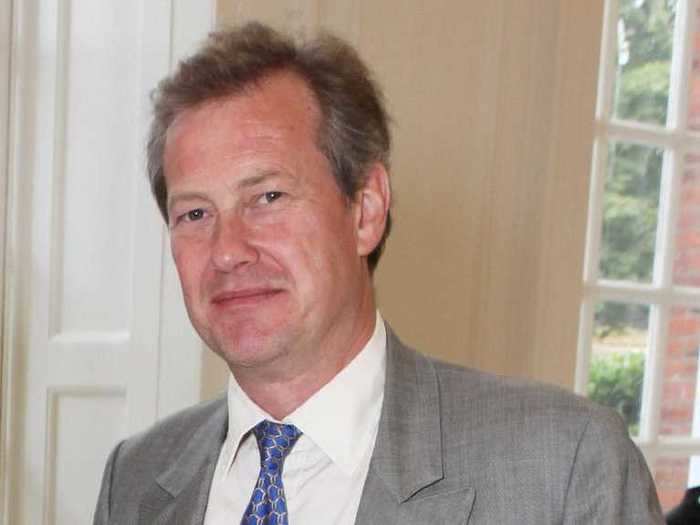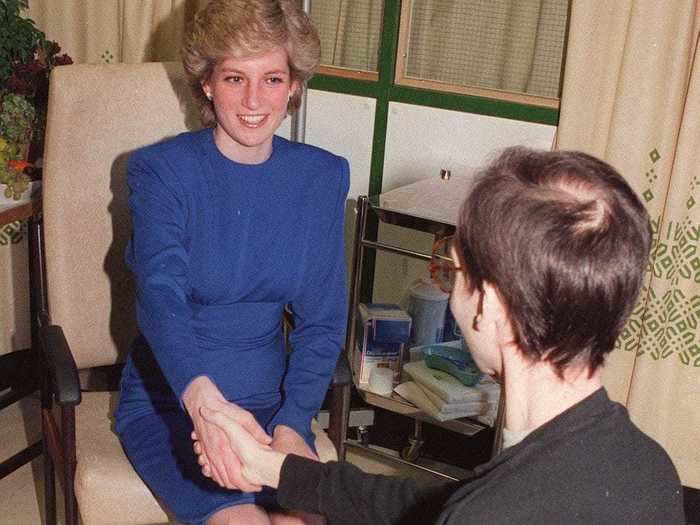Prince William visiting the Albert Kennedy Trust in London.Jonathan Brady/ AFP/ Getty Images.
- Through the years, the royal family has supported the LGBTQ community.
- Prince William, for example, has invited LGBTQ people to Kensington Palace to discuss mental health.
- Queen Elizabeth pledged to protect the LGBTQ community during a speech to Parliament in 2017.
As members of the British royal family continue to break from tradition, some have become more open in supporting the LGBTQ community.
Through the years, Prince Harry and Prince William have publicly announced their support of the community, just like their mother, Princess Diana, did back in the '80s. Even Queen Elizabeth herself has come forward in favor of LGBTQ people.
Here are nine ways the royal family has supported the community.
Prince Harry invited the head of a transgender youth charity to a roundtable discussion, showing his support of the community.
Prince Harry.
Max Mumby/Indigo/Getty Images
In 2019, Prince Harry invited Susie Green, the CEO of Mermaids, a charity for transgender youth, to a roundtable discussion hosted by his mental health charity, Heads Together.
"Mermaids are one of a number of important organizations who are working on the frontline to support the mental health and wellbeing of young people in Britain," a spokesperson for the Royal Foundation said in a statement at the time.
Green said the support of Prince Harry "could change the lives of trans youth, making them feel acknowledged and supported by one of the world's most famous men," the Telegraph reported in 2019.
When Prince William visited the Albert Kennedy Trust, it was thought to be the first time a member of the royal family officially visited an LGBTQ organization.
Prince William visiting the Albert Kennedy Trust in London.
Jonathan Brady/ AFP/ Getty Images
In 2019, Prince William visited the Albert Kennedy Trust, a charity that focuses on working with LGBTQ homeless youth. He was helping the charity open its new service center in east London. At the center, he chatted with young people who the charity has helped.
When visiting the charity, Prince William said he would be "absolutely fine" if one of his children told him they were gay.
Prince William visiting the Albert Kennedy Trust in London.
WPA Pool/ Getty
During his visit to Albert Kennedy Trust, a gay man asked the Duke of Cambridge what he would do if one of his children came out.
"Do you know what, I've been giving that some thought recently because a couple of other parents said that to me as well," Prince Williams said at the event in 2019. "I think you really don't start thinking about that until you are a parent, and I think — obviously absolutely fine by me."
He continued to explain that he would be worried about the public scrutiny they would face.
"It worries me, not because of them being gay, it worries me as to how everyone else will react and perceive it and then the pressure is then on them," he said.
Prince Harry and Meghan Markle publicly announced their support of the LGBTQ community for Pride Month.
Prince Harry and Meghan Markle publicly showed their support of LGBTQ rights.
Chris Jackson/Getty Images
Prince Harry and Meghan Markle took to Instagram in 2019 to voice their support of the LGBTQ community during Pride Month.
"This month we pay tribute to the accounts supporting the LGBTQ+ community - those young and old, their families and friends, accounts that reflect on the past and are hopeful for a deservedly more inclusive future," the post read, paired with inspirational photos of LGBTQ history.
"We stand with you and support you," the post continued. "Because it's very simple: love is love."
In 2017, Queen Elizabeth pledged to protect the LGBTQ community during a speech to Parliament.
Queen Elizabeth at the State Opening of Parliament.
WPA Pool/ Getty
In 2017, Queen Elizabeth gave a speech at the State Opening of Parliament where she announced a number of progressive social changes.
"My government will make further progress to tackle the gender pay gap and discrimination against people on the basis of their race, faith, gender, disability, or sexual orientation," she said in her speech.
Prince William invited LGBTQ members to Kensington Palace to learn more about their experiences.
Prince William announced his support of the LGBTQ community.
Getty/WPA Pool
In 2016, Prince William invited people who identify as LGBTQ to Kensington Palace to further understand the obstacles they face. The conversation specifically focused on homophobia, bi-phobia, and transphobic bullying and how each affects their mental health. He then released a statement in support of the community.
"No one should be bullied for their sexuality or any other reason, and no one should have to put up with the kind of hate that these young people have endured in their lives," Prince William said in 2016. "You should be proud of the person you are, and you have nothing to be ashamed of."
Prince William appeared on the cover of Attitude, a magazine geared towards a gay audience.
Prince William was Attitude magazine's cover star in 2016.
Richard Pohle/ AP Images
Weeks after voicing his support for the LGBT community, Prince William made history in 2016 by becoming the first member of the royal family to appear on the cover of a magazine geared towards a gay audience.
Arianne Chernock, an associate professor of history at Boston University, said the Duke of Cambridge being on the cover was groundbreaking and shows that the royals are "pushing the envelope further than we've seen before."
Lord Ivar Mountbatten became the first royal family member to come out as gay, and he married his partner in 2018, with the support of the royal family.
Lord Ivar Mountbatten is the first openly gay member of the royal family.
David M. Benett/ Getty
Lord Ivar Mountbatten, a cousin of Queen Elizabeth, came out as gay in 2016, becoming the first member of the royal family to publicly identify as LGBTQ. According to the Daily Mail, the royal family was supportive of the Lord's coming out.
In 2018, he married his partner, James Coyle, in Bridwell Park, which was the first-ever same-sex wedding for the royal family.
Carolyn Harris, historian and author of "Raising Royalty: 1000 Years of Royal Parenting," said that this can be seen "as the extended royal family giving a stamp of approval, in a sense, to same-sex marriage."
In the '80s, Princess Diana visited AIDS patients and shook their hands, changing the public mindset on the disease, which had affected many in the LQBTQ community.
Diana shakes hands with an AIDS patient on April 19, 1987.
John Redman/AP
During the '80s, many in the LGBTQ community had fallen victim to the HIV virus. By 1990, almost 90,000 people died from the disease. Although people in the LGBTQ community were not the only ones who contracted the disease, HIV and AIDS did affect them at a disproportionately higher rate.
In April 1987, Princess Diana visited the London Middlesex Hospital to help open the first HIV and AIDS unit in the UK. While visiting the patients, she shook the hand of an AIDS patient without gloves.
At the time, many falsely believed that the disease could be contagious and contracted through handshakes. When the handshake was captured in a photo, it became a historical moment in LGBTQ history.
"If a royal was allowed to go in and shake a patient's hands, somebody at the bus stop or the supermarket could do the same," a nurse at the hospital told the BBC. "That really educated people."

